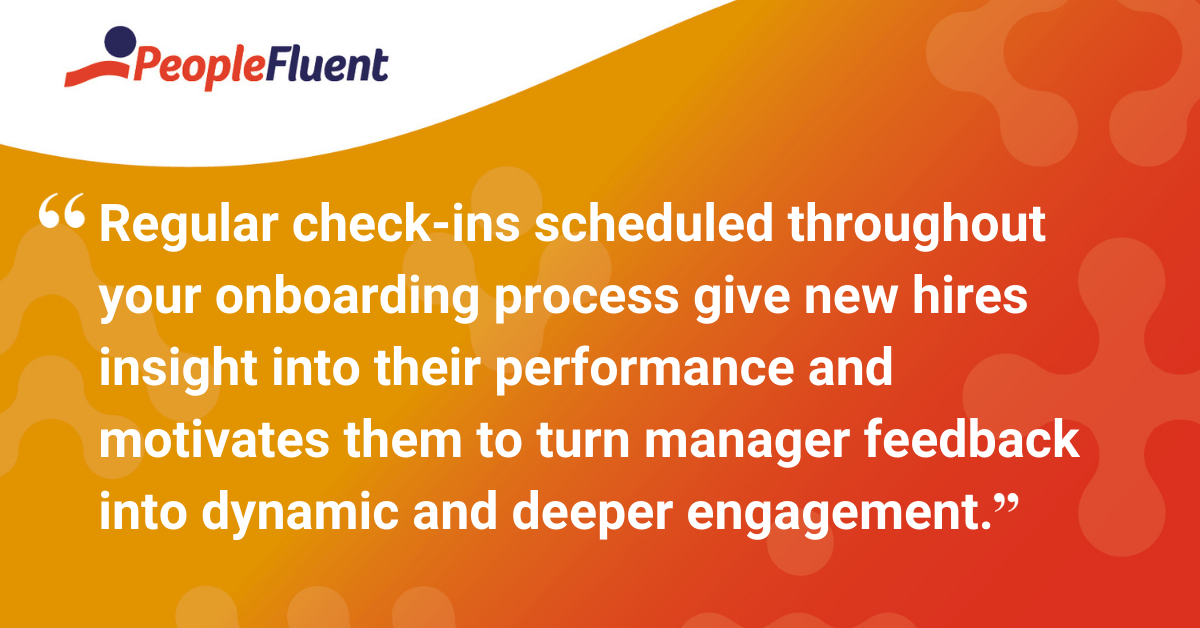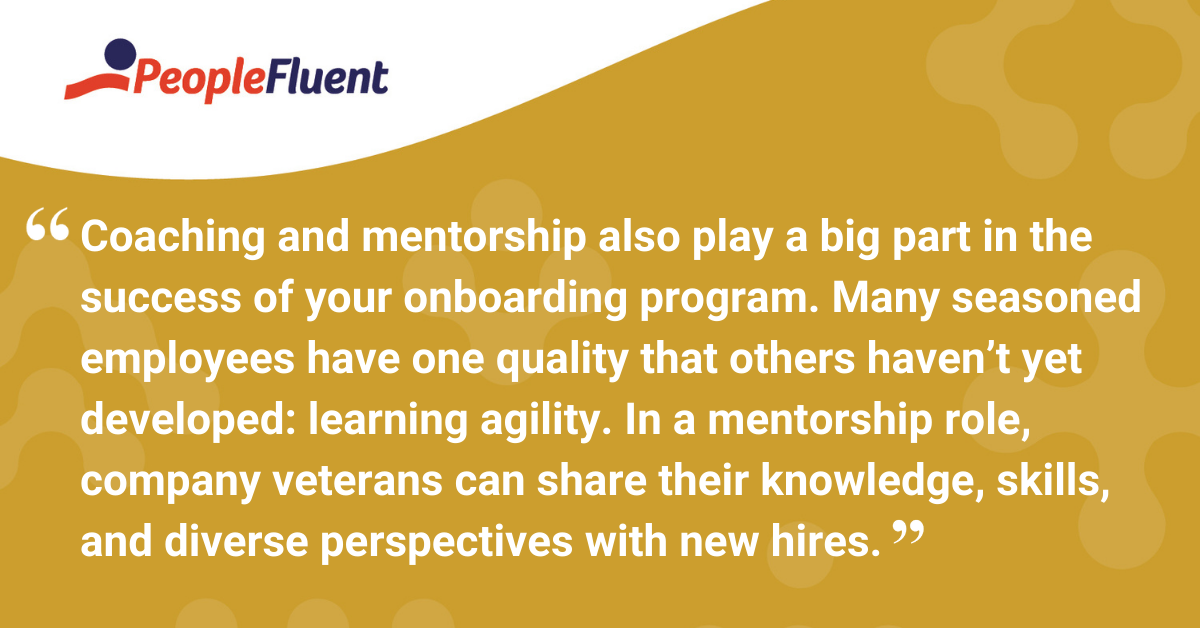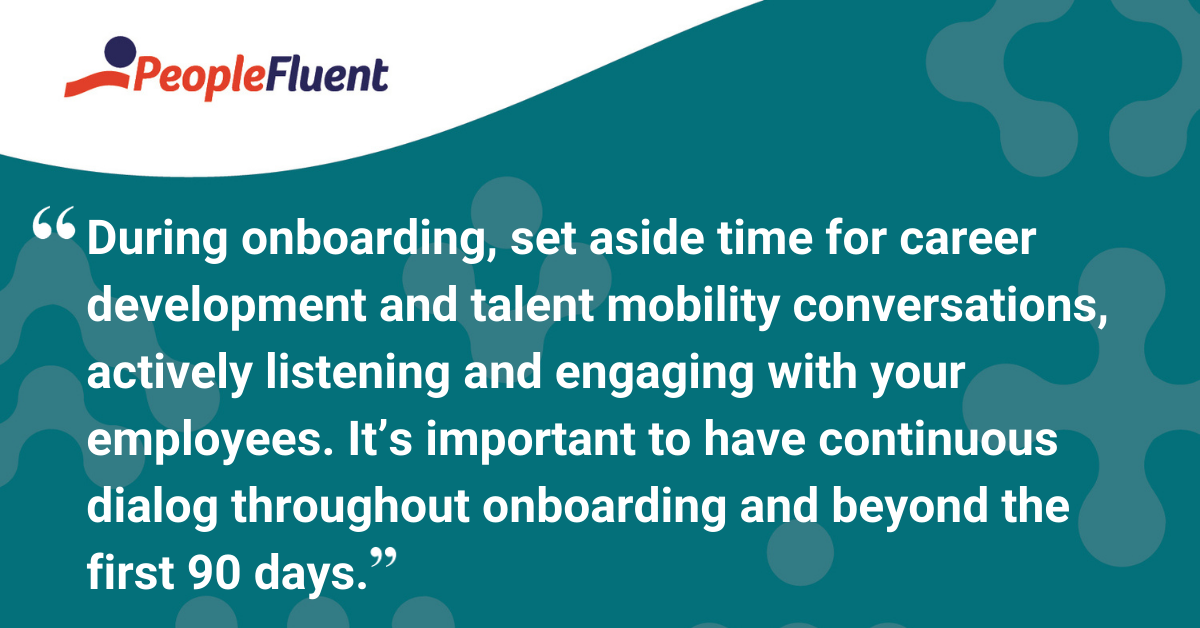Published: Feb 8, 2021Time to read: 5mins Category: Insights
Onboarding Checklists: 6 Benefits for Talent Acquisition Leaders
Your hiring team has worked hard to recruit the right candidate and extended an offer that they’re excited about. Now, it’s time to keep that same energy going. Onboarding is the first encounter new hires have with your organization after the interview process—and you only get one first-day impression to wow them. Make it a lasting one by offering new hires an exceptional onboarding experience, whether they’ll be starting in your office or working remotely.
To help kickstart your onboarding program, whether it’s remote or in-person, here are six reasons to use an onboarding checklist. We've also included links to two onboarding checklists: one tailored for remote onboarding and one for in-person onboarding.
1) Boost Your Employer Brand
A strong onboarding checklist should incorporate tasks that demonstrate your commitment to employee success. For instance, this investment in new and existing talent could be in the form of stretch projects that support competencies or skills your employees are looking to build.
Establishing employee programs that candidates find fulfilling—and familiarizing them with resources right away—helps maintain an employer brand that aligns with your core values.
More job seekers are making employment decisions based on how a company’s values align with their own.
New hires who have a profound onboarding experience are more likely to become a voluntary brand ambassador. HR managers can enrich their employer brand by capturing candid employee narratives to showcase on their company profiles.
YOU MIGHT ALSO ENJOY | ‘Preparing Employees to Run on Your Fast Track: 10 Onboarding Best Practices’
2) Increase Employee Engagement and Productivity
Communication is the bedrock for trust and better workplace relationships—and also happens to be the leading quality employees want in a manager.
Regular check-ins scheduled throughout your onboarding process give new hires insight into their performance and motivates them to turn manager feedback into dynamic and deeper engagement.
Onboarding checklists also keep hiring managers accountable and on track with the tasks that support greater employee engagement and productivity. Taking the enthusiasm, energy, and momentum during onboarding and perpetuating it throughout the employee lifecycle is one of the primary ways to retain employees.

3) Accelerate Recruiting Workflows
A tool that automates talent acquisition enables users to configure workflows specific to their needs. If your onboarding checklist, tailored for your unique onboarding program, lives in a centralized location, the entire team has access and you can foster efficiency and consistency for all employees.
Efficient recruiting processes that allow hiring managers to streamline employee onboarding processes will also benefit the organization thanks to an increase in productivity. For new staffers, an efficient process may mean adding a quick-win project to their onboarding checklist during the first week, which acquaints them with their role at a comfortable pace and helps guard against overwhelming them, which can lead to early burnout.
RELATED READING | ‘How COVID-19 Has and Will Change Recruiting Strategies’
4) Promote an Inspiring Company Culture
All employees have a unique learning and communication style. Make time during their first week to build professional and social connections with their colleagues. Integrating them into your team right off the bat encourages sustainable collaboration and camaraderie, which are primary drivers of employee wellness and intrinsic motivation.
Coaching and mentorship also play a big part in the success of your onboarding program. Many seasoned employees have one quality that others haven’t yet developed: learning agility. In a mentorship role, company veterans can share their knowledge, skills, and diverse perspectives with new hires.
As a formal mainstay, mentorship and coaching programs nurture employee development, make employees feel more valued, reduce learning curves, and build social capital across organizations.

HANDPICKED FOR YOU | ‘Start Before Day One: How Learning Can Inform Talent Acquisition’
5) Support a Modern Talent Journey
Meeting employee needs and expectations requires hiring managers to proactively engage with their reports and to ask what they need to grow professionally.
During onboarding, set aside time for career development and talent mobility conversations, actively listening and engaging with your employees. It’s important to have continuous dialog throughout onboarding and beyond the first 90 days.
Humans have an innate need to learn, and leaders are recognizing how important continuous learning is to employee growth. Your onboarding checklist should include L&D opportunities within an employee’s first few weeks.
Their learning outcomes can help you gauge their current skill level and determine next steps. And with insight from your one-on-ones, you can begin building the foundation for an achievable career development plan.

KEEP READING | ‘How Talent Experience Benefits Employee and Employer’
6) Enhances the Employee Experience
Given their critical role, managers must consider how they can use onboarding as a conduit for influencing and supporting employees’ mental health and wellbeing. For example, introduce new hires to programs focused on improving work-life balance, setting healthy goals, and fostering open communication.
Employee engagement, motivation, and productivity surge when workers find their role relevant and purposeful. Company mentorship programs, and other types of social collaboration, fuel employee learning and supplement the skills employees need to advance in their careers.
Reap the Rewards With a Robust Onboarding Checklist
Successful onboarding programs require a lot of work. It begins before an employee’s first day and extends throughout their time at your organization. But don’t let that deter your hiring teams from getting on board with great onboarding.
With a checklist that puts your new hires center stage and parallels your business goals, your onboarding program will motivate and retain your best talent.
MORE FROM THE BLOG | '9 Steps to a Better Onboarding Program'
Our updated onboarding checklists are available for you to download. Click here to access the remote and non-remote checklists.
Editor’s Note: This blog was originally published in 2019 and has been updated with more recent information.
Master Your Onboarding Program With Comprehensive Software
PeopleFluent software helps you tailor the onboarding process to meet the needs of your most valuable assets, your people.